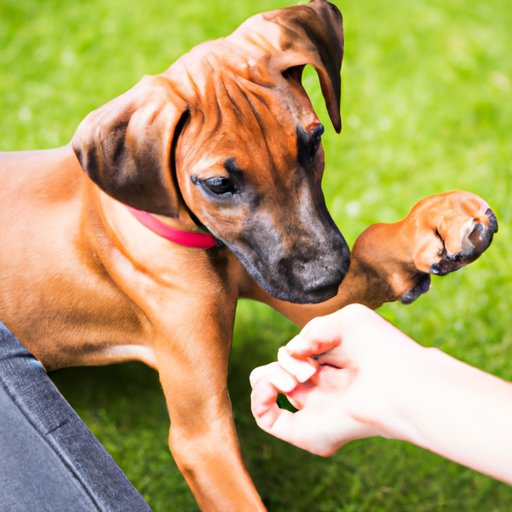
Introduction
One of the biggest challenges for new puppy owners is dealing with biting behavior. While it might seem cute when a small puppy nips at your fingers or toes, this behavior can quickly escalate and become dangerous as the puppy grows. In this article, we will explore how to train a puppy not to bite using positive reinforcement and consistency.
Start with Why
Before we dive into training techniques, it’s important to understand why puppies bite in the first place. Puppies explore the world around them with their mouths, and teething can also cause discomfort. Additionally, some puppies bite as a way to seek attention. By understanding these underlying reasons for biting, we can begin to address the behavior in a more effective way.
Positive Reinforcement Training
One of the most effective ways to train a puppy not to bite is through positive reinforcement. This involves rewarding good behavior rather than punishing bad behavior. For example, if your puppy is chewing on a toy instead of your hand, provide praise and a treat. This reinforces that good behavior is rewarded.
When your puppy does bite, it’s important to redirect the behavior rather than simply scolding the puppy. Offer a chew toy or other appropriate item for your puppy to bite on instead. By consistently redirecting the behavior and rewarding good behavior, your puppy will learn what is and isn’t acceptable.
It’s important to note that positive reinforcement requires patience and consistency. It may take some time for your puppy to learn what behaviors are rewarded and what behaviors are not. Be patient and persistent in your training methods.
Consistency
Consistency is key when it comes to training your puppy not to bite. Every member of your household needs to be on the same page and use the same training techniques. If one person allows biting behavior while another person punishes it, this will only confuse your puppy and make training more difficult.
To ensure consistency, it’s important to have a plan in place for how to handle biting behavior. This could involve redirecting the behavior, providing appropriate toys and treats, or even separating yourself from the puppy for a short time as a time-out. Make sure everyone in your household is aware of the plan and follows it consistently.
Patience
Training a puppy not to bite requires patience. It’s important to remember that your puppy is still learning and may not immediately understand the correct behavior. Biting behavior may not cease overnight, and there will likely be setbacks along the way.
Don’t give up on your puppy and be patient with the training process. By consistently using positive reinforcement and redirecting biting behavior, your puppy will eventually understand what is and isn’t acceptable.
Socialization
Socialization is also an important aspect of training a puppy not to bite. Regular, supervised playtime with other dogs can help teach your puppy appropriate play behavior. When puppies play with each other, they learn when they are playing too rough and how to control their teeth and jaws.
Make sure to supervise playtime and separate your puppy from any other dogs that exhibit aggressive behavior. By socializing your puppy with other dogs, you are teaching them appropriate play behavior and reducing the likelihood of biting in the future.
Conclusion
Training a puppy not to bite requires patience, consistency, and positive reinforcement. By understanding the reasons why puppies bite and using effective training methods, you can curb biting behavior in your puppy and ensure they grow into a well-behaved adult dog. Remember to remain patient and persistent in your training efforts, and your puppy will eventually understand what is and isn’t acceptable behavior.
Don’t give up on your puppy and remember that training takes time. By using positive reinforcement and consistent training techniques, you can enjoy a long and happy life with your furry companion.




